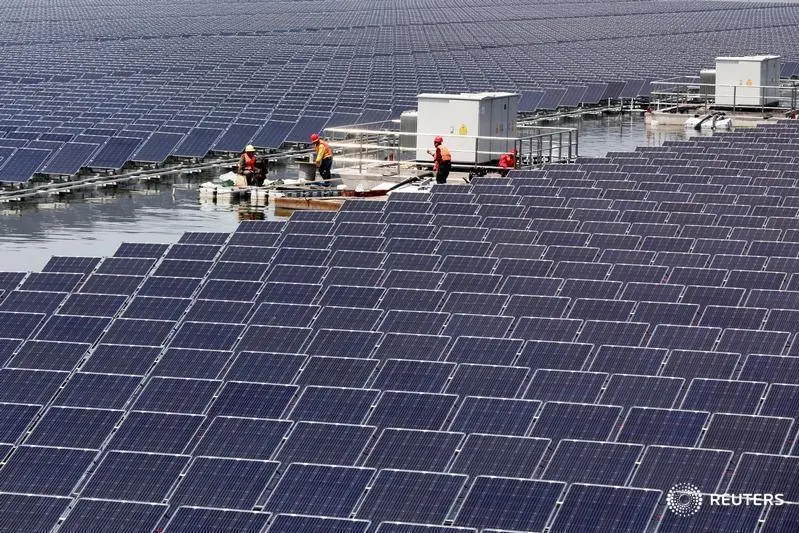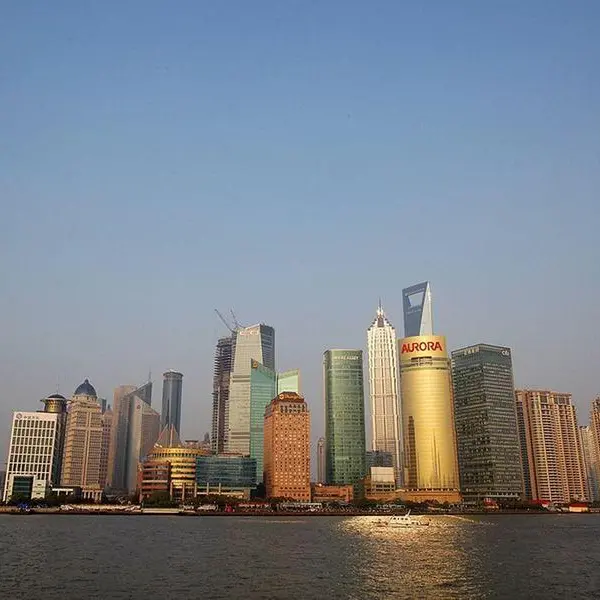PHOTO
(The opinions expressed here are those of the author, a columnist for Reuters.)
January 11, 2024 - China's status as the colossus of renewable energy is set to be cemented in the next five years, with the world's second-biggest economy adding more capacity than the rest of globe combined.
The International Energy Agency said in its Renewables 2023 report, released on Thursday, that China will account for 56% of renewable energy capacity additions in the 2023-28 period.
China is expected to increase renewable capacity by 2,060 gigawatts (GW) in the forecast period, while the rest of the world will add 1,574 GW, the IEA data showed.
The European Union and the United States are the next biggest builders of renewable energy, at 429 GW and 337 GW respectively.
It's worth noting, though, that India is forecast to add 203 GW of renewable capacity, while the 11 countries that make up the Association of Southeast Asian Nations are expected to boost capacity by a combined 63 GW.
This shows that Asia is the dominant force in renewable energy deployment, largely because of supportive policies and the availability of capital and offtake agreements for the electricity produced.
The IEA report also sheds light on just how China is coming to be the leading force in renewable energy, with supportive policies driving a huge increase in the expected capacity additions from the previous report in December 2022.
"China accounts for almost 90% of the global upward forecast revision, consisting mainly of solar photovoltaic (PV). In fact, its solar PV manufacturing capabilities have almost doubled since last year, creating a global supply glut," the IEA said.
"This has reduced local module prices by nearly 50% from January to December 2023, increasing the economic attractiveness of both utility-scale and distributed solar PV projects," the report said.
The IEA said the lower costs are making utility-scale solar more attractive in China than coal- and gas-fired generation.
China has also clarified the rules around its green certificates, which will provide additional revenues for solar and wind developers.
China is also expected to increase its gap over the rest of the world in deploying renewables, even as the United States and countries in Europe boost policy and financial support.
ADVANTAGE CHINA
China has several advantages that sometimes aren't available in other countries.
These include being able to approve and build transmission grids and renewable energy projects more quickly than in countries where democratic processes and the objection of local communities can constrain infrastructure development.
China can also finance projects more easily than in countries where money is lent or raised on the basis of expected returns rather than on policy priorities.
The country's manufacturing base also allows for economies of scale in producing PV panels and wind turbines, and this is further supported by China's efforts over the previous decades to build a leading position in the supply and processing of minerals such as copper, nickel and lithium.
There is also a caveat to China's rapid build-out of renewable capacity because at the same time it is still adding substantial coal-fired generation.
China is the world's biggest coal producer and importer and has more coal-fired capacity under construction than the rest of the world combined.
China is building 136.24 GW of coal-fired generation, and has another 255.5 GW at the announced, pre-permit or permitted stage, according to data compiled by the Global Energy Monitor.
This is 67% of the global coal-fired capacity currently under construction and 72% of the potential new capacity.
China already accounts for 53% of the world's 2,095 GW of operating coal-fired generating capacity, a share likely to increase in coming years as more coal plants are retired in the developed world.
When taking China's renewable deployment together with its ongoing coal-fired construction, a more nuanced view emerges of the country's energy profile.
It's clear that renewables are increasing their share of China's power generation, but it's equally clear coal-fired power is going to be around for decades to come, and that if China does meet its goal of net-zero emissions by 2060, it will largely be achieved in the final years prior to the deadline.
The opinions expressed here are those of the author, a columnist for Reuters.
(Editing by Tom Hogue)












